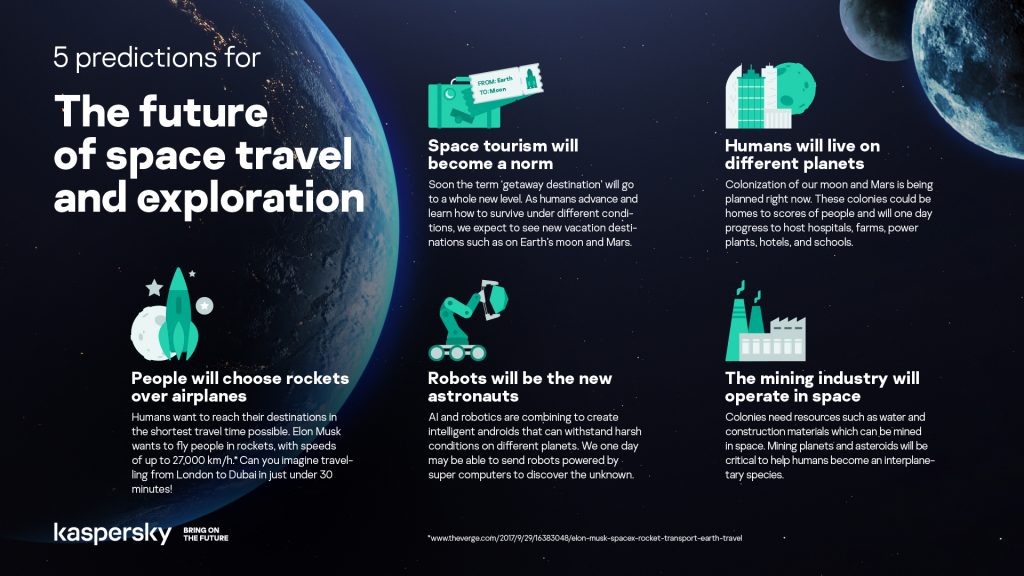
On Earth, we depend on what we’ve put into space. And like all critical infrastructure, space infrastructure needs cybersecurity. It’s a vital backbone for sensitive systems and tasks that support economies, communication and science. Increased technology in critical infrastructure means improved service, but it also means more ways for intruders to attack.
Cyberattacks on critical infrastructure have been constant over the past 10 years. They aim to steal intellectual property, spy and sabotage. Space infrastructure – like orbital stations, satellites and space-to-earth communications – attracts the same unwanted attention.
We use satellites to communicate and monitor weather, but also to explore space. Increasing space missions also bring new ways to attack. And whenever a new technology emerges, it attracts hacktivists, organized state cybercriminals and cyber mercenaries. We must learn from past mistakes and put cybersecurity front and center while expanding space operations.

Kaspersky National Cybersecurity
Securing nations
Meet the most stringent security requirements and protect critical national infrastructure.
Layers of space infrastructure
Like typical critical infrastructure, space infrastructure has three main layers.
Corporate network or user segment
Typical critical infrastructure has a corporate network that hosts email, file servers, digital services and so on. In space infrastructure, it’s called the ‘user segment,’ and it’s where administrators and systems operators process data from all segments.
Field layer or space segment
Space probes, sensors, satellites and other things that collect data from the environment are the ‘space segment.’ In traditional critical infrastructure, it’s the field layer. The space segment facilitates long-range communication and monitoring services to the ground segment.
Supervisory or ground segment
We need a layer between connecting field devices with the corporate network for monitoring and processing data. It’s called the supervisory segment in critical infrastructure or the ‘ground segment’ in space. The ground segment receives space communications, and monitors and controls spacecraft like satellites, telescopes and probes.
Each segment hosts systems, networks and devices and provides a set of services to other segments. When a service or device is network-connected, it’s exposed to cyber threats.
Cyberthreats in space
Cyberattacks can enter space infrastructure through corporate networks (the user segment,) satellites, satellite communication and any system that connects to the space network. As early as 2022, 4G towers on the moon could be another entry point.
We don’t often hear about cyberattacks on space infrastructure, but they happen, which is why some countries are expanding their space cyber defense. In 2019, the US government established the Space Force as its sixth armed force. The Space Force protects US interests in space, including cyber operations. In the same year, NASA found a rogue device, a Raspberry Pi, stealing sensitive information undetected for 10 months.
Cyberattacks affect space agencies like all big organizations. Cybercriminals target their networks for many reasons. As well as targeting space networks’ user segment, threat actors target communication between ground stations and satellites, eavesdropping and spying.
We also see an arms race in space warfare. Global powers are establishing space units within armed forces, while others are taking it to the next level with kamikaze satellites.
But seriously, alien cyber-hackers
So far, we’ve discussed human-generated threats. But there are also non-human and unintentional threats like space junk, solar flares and thunderstorms that affect space infrastructure and cause disruptions on Earth.
We don’t know if other planets have cybercriminals, so we should probably keep an open mind. Cybercrime’s history suggests most potential threats are a matter of ‘when,’ not ‘if.’
Future of space exploration
More countries than ever are launching missions to space. In 2020 alone, China, the United Arab Emirates and the US launched missions to Mars while China’s rover has been exploring the Martian surface. NASA’s Artemis program aims to place the first woman and next man on the moon by 2024, to study and collect information for planning a base camp on its south pole for the next giant leap – sending humans to Mars. Once, only governments were in space, but private companies are now taking over the space race.
Here are my predictions for the future of space exploration.

We’ll fly by rocket instead of airplane
We’re always looking for the fastest way to travel. On the ground, the proposed Hyperloop could reach speeds of 760 miles an hour – 50 percent faster than commercial jets. Meanwhile, Elon Musk wants to fly people in rockets instead of airplanes, avoiding friction and air resistance to make speeds up to 17,000 miles per hour, or London to Dubai in under 30 minutes.
Space tourism will be a norm
Space tourism is right around the corner. We’ll see hotels in orbit as our newest ‘getaway’ on a whole new level. Gateway Foundation announced plans to open the first space hotel, Voyager Station, as early as 2027. As we learn how to survive in conditions different from Earth, we’ll also see vacation destinations on the moon and Mars.
Robots are the new astronauts
Artificial Intelligence is prominent in our lives today. It’s just a matter of time before we have robots capable of doing anything humans can do, including becoming astronauts. We can design robots to withstand harsh conditions on different planets.
There are already semi-autonomous machines like Perseverance on Mars, but their computational intelligence is limited. As technology advances, we’ll send robots powered by supercomputers to discover the unknown.
Human colonies on planets and moons
Humans will venture into space and start colonizing solar system planets and moons. We’re already planning bases on the moon and Mars, so it’s just a matter of time until we see sustainable colonies hosting thousands, if not millions, of people. Infrastructure will also progress to host hospitals, farms and schools.
We’ll mine space resources
To settle on a planet, we’ll need to mine its raw materials. Water could be highly valuable on other planets because it can be broken down to hydrogen for rocket fuel and oxygen to breathe. Space mining will be one of the most crucial industries for humans going interplanetary.
This space future, or any other we imagine, will need IT infrastructure and communication, and like space infrastructure today, will have ways for cybercriminals – alien or human – to attack. We must remember space infrastructure is already crucial to life on Earth and protect it accordingly. Cybercriminals have already shown they can hide a Raspberry Pi from NASA, and they’ll have many more tricks up their sleeves. Let’s make sure we explore the solar system and the universe in the safest way we can.




